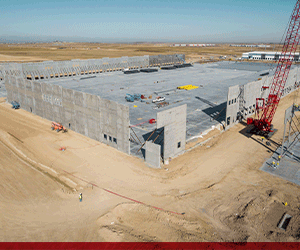DENVER – Marcus & Millichap’s First Half 2018 National Seniors Housing Research Report states that Denver is a Top 10 Seniors Housing Construction Market. Denver currently has 2,145 units under construction and in Q4 2017, the city had a 90.2 percent stabilized occupancy rate.
According to the report senior housing demand invigorates as homeownership becomes less advantageous under new tax code. Changes to the tax law beginning in 2018 could benefit the seniors housing market as the advantages of homeownership are reduced, prompting some senior residents to sell single-family homes and move into senior communities. Construction, especially in the assisted living space, has grown substantially over the past few years, but demand for seniors housing should strengthen, boosted by these changes and an aging population.
Tony Cassie, first vice president of Investments, Marcus & Millichap, said that despite all of the new construction in Denver, either stabilized, underway, or in planning, investor interest in acquisitions remains very strong. “This fact signals that new supply will be absorbed and there is sufficient unmet demand for the new projects in process. It’s anyone’s guess for how long this will continue,“ said Cassie.
Investment Highlights:
- REITs have been restructuring portfolios over the past couple of years and are seeking to redeploy funds this year, targeting robust cash flowing deals in familiar markets.
- Stabilized seniors housing properties in primary markets trade at a premium, with Assisted Living and Independent Living facilities capturing first-year returns between 6 percent and 7 percent. Initial yields for skilled nursing assets are often above 10 percent.
- Private funds and equity funds are moving into the seniors housing sector, providing a source of financing options for turn-key assets and development deals.
Nationally, demand for Independent Living units remains intense, keeping occupancy above 90 percent again this year. As completions in the segment remain elevated this year, this could potentially place additional downward pressure on the overall stabilized occupancy rate, resulting in a decline again in 2018. Rent growth will continue to moderate as operators compete for tenants, and the average rises 1.7 percent to $3,158 per month.
In 2018, the number of majority Assisted Living units underway remains above historical norms, though the figure is down approximately 5,000 units from the peak last year. Developers in the segment are preparing for an increase in de-
mand as the baby boomer generation ages into their senior years. Downward pressure on the overall occupancy rate will persist and rent growth will continue to temper.









